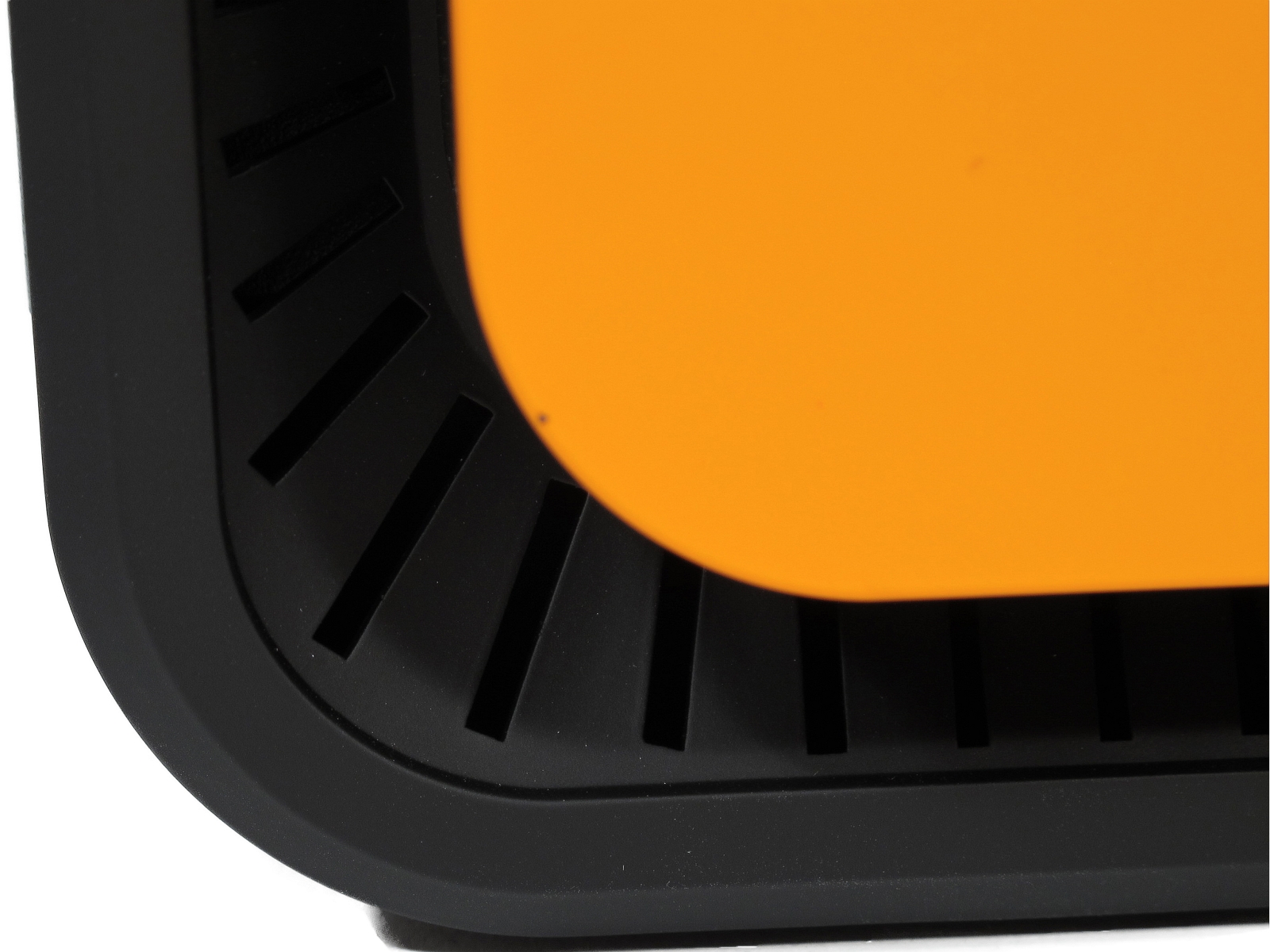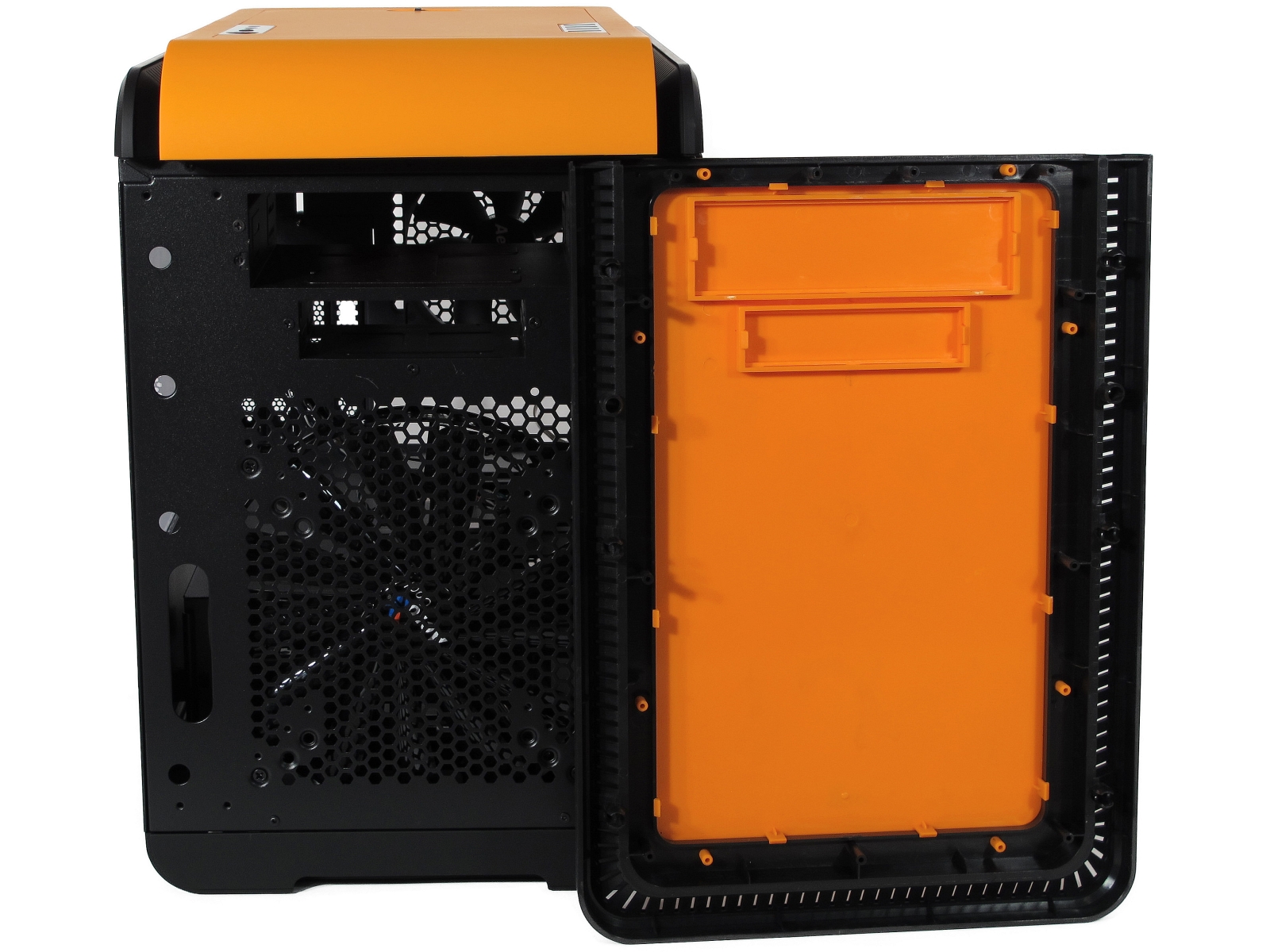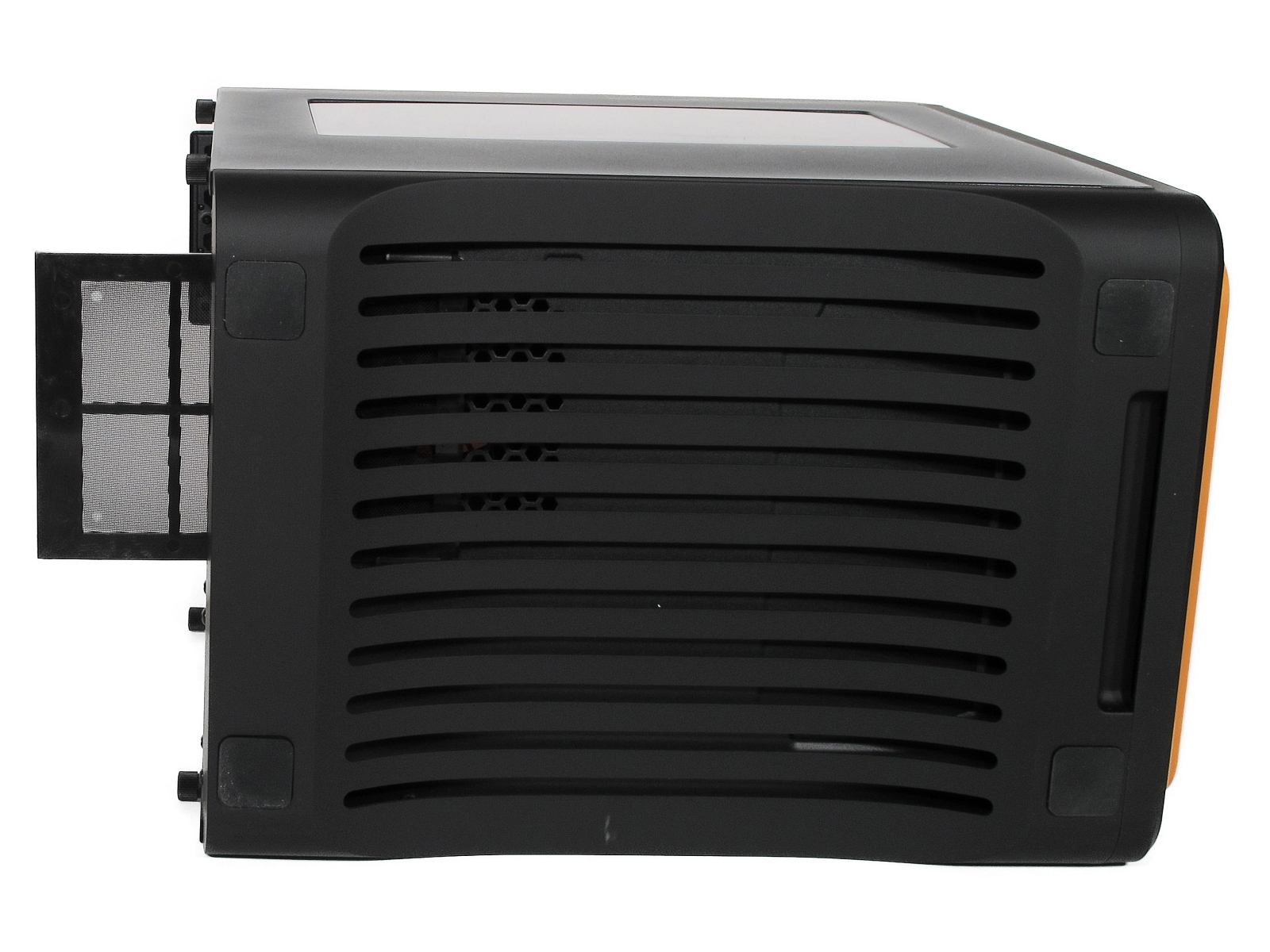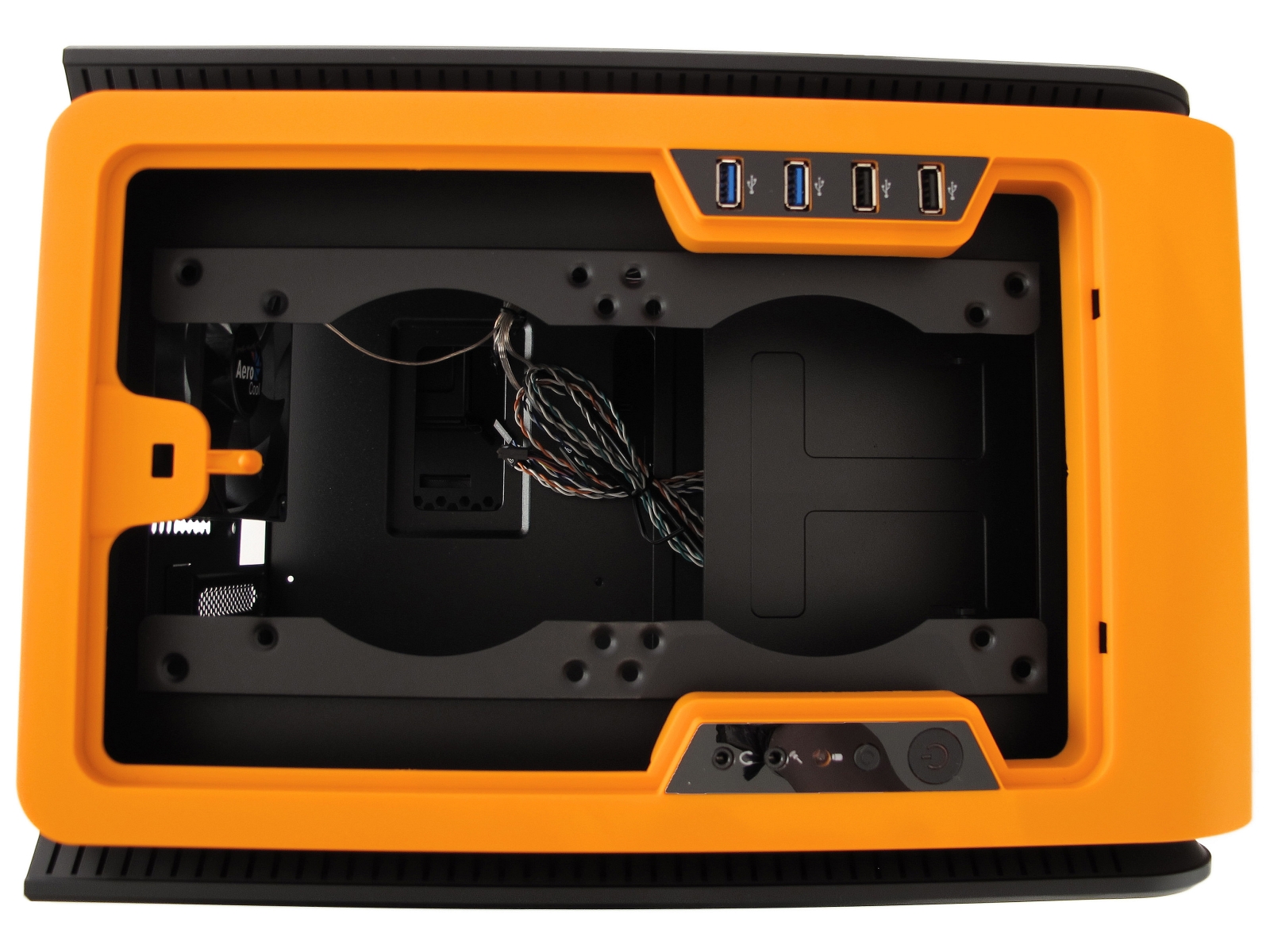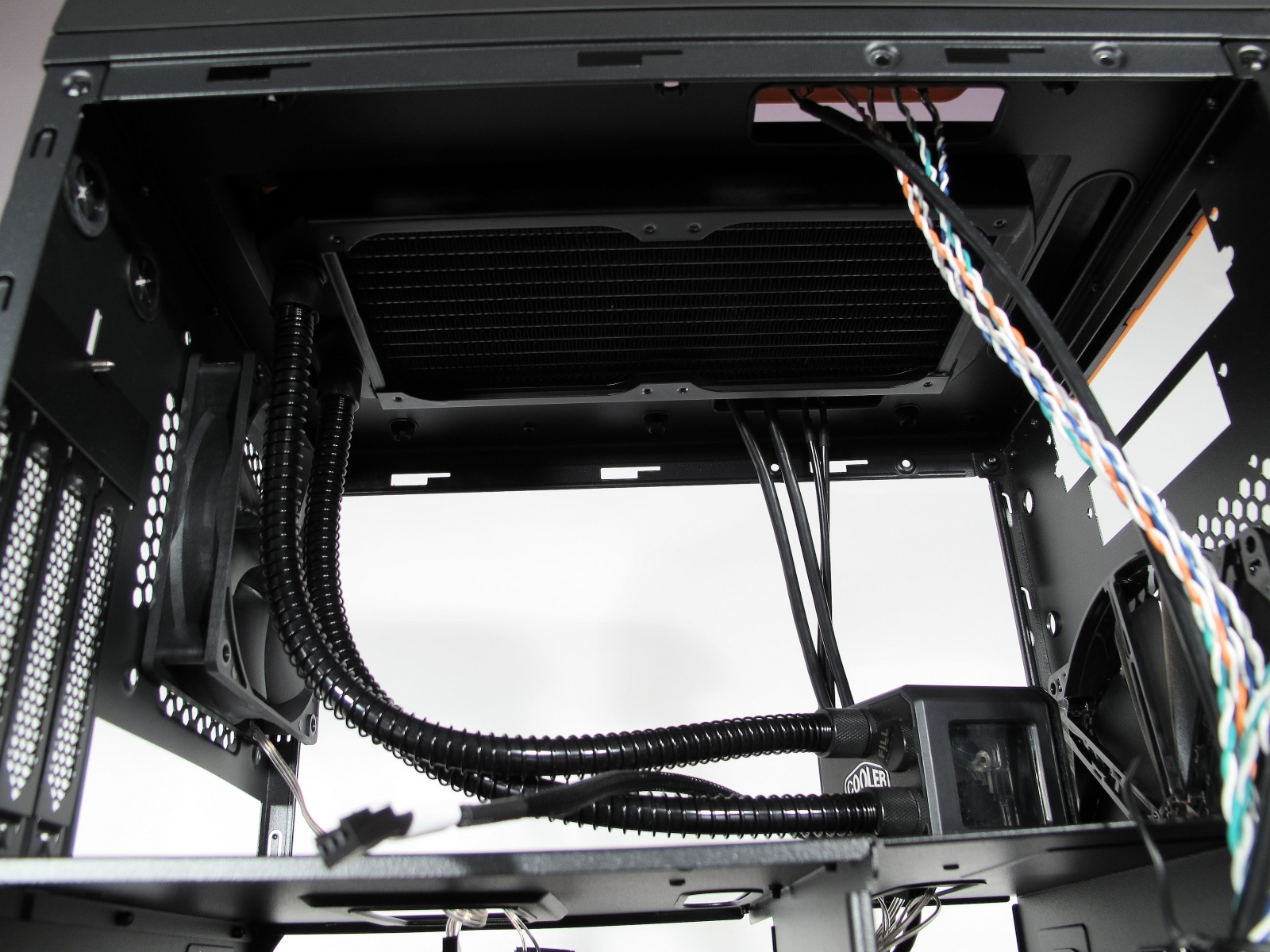Aerocool DS (Dead Silence) Case Review
Aerocool, a company best known for its flashy tower-style gaming cases, surprised us with a small and well-thought-out cube-shaped chassis with space for tall CPU coolers and long graphics cards, in spite of its size. It comes in six color combinations.
Cooling And Dust Protection
The Dead Silence's basic design centers on a two-chamber approach. The top level houses the motherboard, with all of its heat-generating components plugged into it, while the bottom is reserved for the power supply and storage.
Armed with a 200 mm intake fan and 120 mm exhaust, the Dead Silence includes the accessories needed to keep enthusiast-class hardware cool in a purposely cramped space. The larger front fan promises a nice, wide airflow that should push air across most of the installed components. As mentioned, both fans spin slowly, and the benchmarks will show if they're powerful enough to keep up with a high-end gaming system. Both fans are compatible with three- and four-pin power connectors.
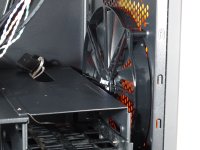

Since the case features smooth, unbroken surfaces, air enters via slits cut into the front cover's sides. You can see them in the shot below. These go almost all the way around the front, from one side of the top cover all the way to the bottom, over to the other side, and all the way up again to the top.
Unfortunately, the case doesn’t have a dust filter covering the front fan, even though there would have been enough space for it. We can only hope that fewer dust particles will enter, compared to cases with lots of mesh up front, due to the placement of those small slits.
The power supply's air intake does feature a dust filter, which can easily be accessed by pulling it out of the back of the case.
The Dead Silence can be optionally equipped for airflow through the case's top panel. Removing that cover reveals space to install two 120 or 140 mm fans.
In order for the optional fans to do their work, the Dead Silence's top cover is replaced with one that features openings and a dust filter. This option comes in handy as you start stepping up to hotter hardware that dissipates power inelegantly (AMD's Radeon HD 7990 and Nvidia's GeForce GTX 690 are good examples).
Get Tom's Hardware's best news and in-depth reviews, straight to your inbox.
Water Cooling
You can also use the space below that optional mesh top to house a 240 mm radiator for water cooling. First, the 5.25” and 3.5” external drive cages, which are held in place by screws, need to be taken out. From there, you even have enough space for a radiator sandwiched by fans. And the motherboard is installed horizontally, not vertically, so you won't have to worry about potential clearance issues.
Current page: Cooling And Dust Protection
Prev Page Exterior And Picture Gallery Next Page Component Installation-
DarkSable Well damn. I really like this thing, but it's just too big for a mini-ITX rig, and there are a lot better options out there for micro-ATX.Reply -
slyu9213 I agree kind of big and not sure how silent it is. But when I think of gaming I don't think of silent. Especially with some of the fans on the video cards.Reply -
DarkSable But that's why you watercool. ;)Reply
(Which this case doesn't have amazing support for. There aren't any good 200mm radiators to put in the front.) -
chumly Can you guys take a thermal reading at the point between the motherboard and PSU when the system is at load please?Reply -
Crashman Reply
Did anyone see any mention of the Bitfenix Prodigy? I used the Mini ITX version of this case in the June System Builder Marathon.11743015 said:Well damn. I really like this thing, but it's just too big for a mini-ITX rig, and there are a lot better options out there for micro-ATX. -
DarkSable Reply11743356 said:Did anyone see any mention of the Bitfenix Prodigy? I used the Mini ITX version of this case in the June System Builder Marathon.
Hang on, I'm confused. Two points.
1) I've used a prodigy before, and consider it huge for mini-ITX. It has its uses, but it's specialized... but no, I didn't see it mentioned in the article. What does that have to do with it?
2) Wait, I'm confused. Is "this case" referring to the prodigy or to this dead silence case. Does the case reviewed in the article actually have two versions, a mini-itx and a matx? If so (and the matx isn't done as poorly as the matx prodiy), that would be awesome.
-
Crashman Reply
Now I'm confused? I just looked at the pictures and spotted a case structurally identical to my Mini ITX Prodigy, except for the added width. Does the different plastic really disguise it that well?11743462 said:11743356 said:Did anyone see any mention of the Bitfenix Prodigy? I used the Mini ITX version of this case in the June System Builder Marathon.
Hang on, I'm confused. Two points.
1) I've used a prodigy before, and consider it huge for mini-ITX. It has its uses, but it's specialized... but no, I didn't see it mentioned in the article. What does that have to do with it?
2) Wait, I'm confused. Is "this case" referring to the prodigy or to this dead silence case. Does the case reviewed in the article actually have two versions, a mini-itx and a matx? If so (and the matx isn't done as poorly as the matx prodiy), that would be awesome.
Or are you thinking of the completely-revised Prodigy M, rather than the original Prodigy? Please take another look at the original Prodigy. If this case is better than the Prodigy M and I'd tested both, I'd have probably called the DS "What the Prodigy M should have been"
-
Myrkvidr I would have compared the DS to the Prodigy, but unfortunately I never received one of the Bitfenix ITS-Cases for testing...Reply -
DarkSable Reply11743552 said:Now I'm confused? I just looked at the pictures and spotted a case structurally identical to my Mini ITX Prodigy, except for the added width. Does the different plastic really disguise it that well?
Or are you thinking of the completely-revised Prodigy M, rather than the original Prodigy? Please take another look at the original Prodigy. If this case is better than the Prodigy M and I'd tested both, I'd have probably called the DS "What the Prodigy M should have been"
Okay, gotcha, yes. It's another Prodigy spinoff, I agree. I still consider it large, though. :P
